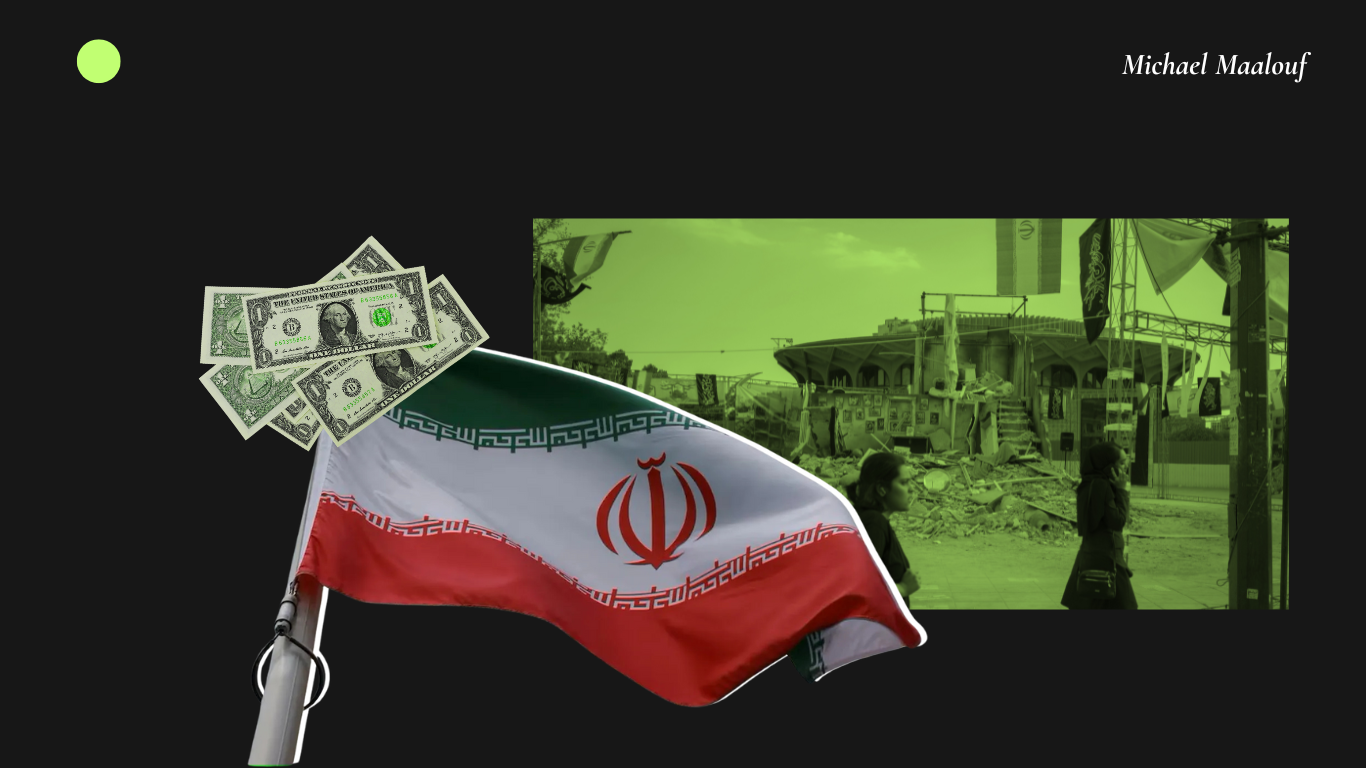


Is the Iranian regime in threat of collapse due to its economic challenges?
August 18, 2025
A-
A+
In the past two years, the Middle East has been facing major political shifts that all observers agree will draw a whole new picture for the region. On a wide geopolitical scale, the Iran-led “Axis of Resistance (AoR)” has faced major blows from the deterioration of Hamas’ military capacity in Gaza, the 2024 summer war between Hezbollah and Israel, which devastated Lebanon, to the shocking fall of the Assad regime in Syria in late 2024, and finally the Israeli-Iranian conflict in June 2025. As a result of this 12-day conflict, Iran faced heavy infrastructure losses, 1,100 deaths, and the loss of key military leaders and scientists. Even though the AoR has heavily impacted the survival of the Iranian regime and the presence of its sponsored paramilitary forces in Iraq, Yemen, and Lebanon does not fully determine that its existence is over, as some political analysts like to assume.
Amidst this turmoil, the focus must be held on the central part of the AoR web, which is Iran, and look into its internal situation, as an assessment will create a picture for the future. In this short article, we will take a brief look at one of the central challenges facing Iran at the moment, which is its critical economic situation.
The Iranian rial continues to depreciate, which prompted a bill to remove four zeros from its value in an attempt to re-denominate the currency. In this context, the new rial is set to be equal to 10,000 of the current rials to simplify transactions. Additionally, the plan calls for reviving the “Qiran,” a currency unit that subdivides the new rial into 100 Qirans. Economists view this currency change as a useless measure, as it cannot help curb inflation, which is currently projected to be 35% or more in 2025. In turn, Iran needs serious reforms and a better political climate to solve these issues; however, tensions with the US and Israel remain high, and the conflict points over the nuclear deal are far from being resolved.
In terms of the future economic outlook, there are no positive signs. The median GDP growth of around 3.4% in 2024 is expected to decrease to only 0.3% in 2025, according to the IMF. Looking at the situation in dollar terms, the nominal GDP is set to fall from $401 billion in 2024 to $341 billion in 2025, creating a $60 billion contraction in the size of the economy.
Amid the economic pressures, IMF data shows a rise in unemployment from 7.7% in 2024 to 9.5% in 2025, accompanied by increasing discontent among the local population over the current situation. The crisis has had a profound impact on the country’s youth, particularly those aged 18-35, with unemployment rates of around 15%. For those aged 15-24, the rate increases to 20%. Overall, only 41% of Iran’s working-age population is participating in the labor market.
For those who are employed, the situation is not much better, as wages are failing to keep up with rising inflation. The minimum wage was increased by 35%, to almost 1.1 million rials ($137–186). In reality, this wage today only covers one-quarter of a family’s basic living costs, down from roughly half previously. Food inflation is becoming a serious problem over time.
Finally, looking at the country’s trade balance, the IMF projects that exports will shrink by 5% and imports will fall by 9.6% in 2025 due to sanctions and the ongoing economic contraction. However, a current account surplus of $3 billion is still expected for 2025, which is lower than the $10.9 billion surplus recorded in 2024.
In conclusion, there is no definitive answer to the paper’s central question, as regime collapse is a complex matter involving numerous internal and external factors, and is highly tied to long-range implications, especially when it has endured years of pressure and sanctions, as seen in the case of Iran. Shrinking GDP, reduced trade surplus, currency depreciation, rising unemployment, and other economic indicators describe the heavy challenges that the regime is currently facing in maintaining its economic order and its citizens’ discontent over the government’s performance. The prolongation of this scenario sets a stronger ground for public disapproval and possibly movement towards regime change. However, this is not an easy card without proper sponsorship and organised motives. What is certain is that the oil revenues remain intact, and the regional Iranian proxy networks continue to function, further postponing a potential collapse. The fall of regimes is always imminent, and it is always about time and how the internal and external political cards are used.
Read More
-
Phantom Deals: The Shell Companies Winning Syria’s Billion-Dollar Projects
-
Destruction and siege drive As-Sweida into a deepening humanitarian crisis
-
Tamara el-Zein: From Science Champion to Minister of the Environment
-
After Graham’s Beirut Visit: Tel Aviv Watches More Closely
-
Everyone is depending on the Lebanese Army, but can it deliver?
